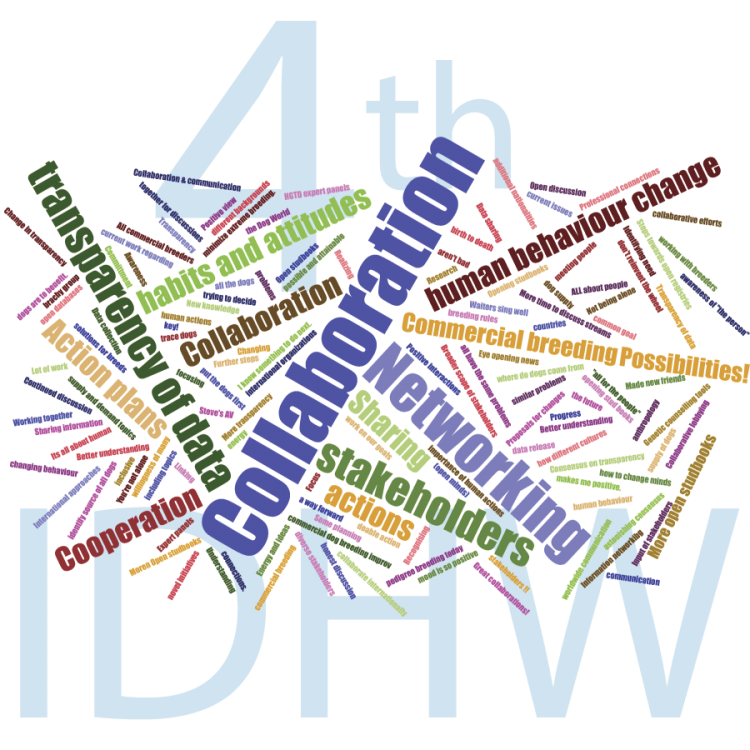About This File
THIS IS AN OPEN ACCESS ARTICLE - YOU MAY READ OR DOWNLOAD THE ARTICLE AS PDF FROM THE PUBLISHER'S WEBSITE.
Article links:
- http://journals.plos.org/plosone/article?id=10.1371%2Fjournal.pone.0172918
- http://journals.plos.org/plosone/article/file?id=10.1371/journal.pone.0172918&type=printable (PDF)
A. M. Oberbauer1*, G. G. Keller2, T. R. Famula1
1 Department of Animal Science, University of California, Davis, Davis, CA United States of America,
2 Orthopedic Foundation for Animals, Columbia, MO United States of America
"The objectives of the present study were to characterize the influence of non-compulsory selection on phenotypic radiographic assessment of hip and elbow conformation over time. Dog breeds that were most highly participatory in a voluntary United States radiographic screening process for hips and elbows were evaluated for improvement, whether maternal or paternal selection was more responsible for any observed progress, whether some breeds prove more amenable to selection than others, and whether selection against one orthopedic disorder yielded concomitant improvement in the other."
Abstract
"Canine hip dysplasia (CHD) and elbow dysplasia (ED) impact the health and welfare of all dogs. The first formally organized assessment scheme to improve canine health centered on reducing the prevalence of these orthopedic disorders. Phenotypic screening of jointconformation remains the currently available strategy for breeders to make selection decisions. The present study evaluated the efficacy of employing phenotypic selection on breed improvement of hips and elbows using the Orthopedic Foundation for Animals complete database spanning the 1970±2015 time period. Sixty breeds having more than 1000 unique hip evaluations and 500 elbow evaluations (1,056,852 and 275,129 hip and elbow records, respectively) were interrogated to derive phenotypic improvement, sex and age at time of assessment effects, correlation between the two joints, heritability estimates, estimated breeding values (EBV), and effectiveness of maternal/paternal selection. The data demonstrated that there has been overall improvement in hip and elbow conformation with a reduction in EBV for disease liability, although the breeds differed in the magnitude of the response to selection. Heritabilities also differed substantially across the breeds as did the correlation of the joints; in the absence of a universal association of these differences with breed size, popularity, or participation in screening, it appears that the breeds themselves vary in genetic control. There was subtle, though again breed specific, impact of sex and older ages on CHD and ED. There was greater paternal impact on a reduction of CHD. In the absence of direct genetic tests for either of these two diseases, phenotypic selection has proven to be effective. Furthermore, the data underscore thatselection schemes must be breed specific and that it is likely the genetic profiles will be unique across the breeds for these two conditions. Despite the advances achieved with phenotypic selection, incorporation of EBVs into selection schemes should accelerate advances in hip and elbow improvement."
From the Discussion...
"The data presented here confirms that employing phenotypic health information and selecting sires and dams from pedigrees free from dysplasia does reduce the condition. Acceptance of using health information in breeding decisions is growing. A 2004 study of Dutch Boxer breeders [75] indicated that 32% of the breeders utilized genetic information, expressed as an odds ratio of particular sire-dam combinations producing deleterious health traits, in their mate selections. A recent report assessing selection practices among Australian dog breeders indicated that the ªgenetics and healthº attribute of potential dams was one of the top four decision components [76]; despite this weighting in dam selection some breeders failed to practice health screening, including for CHD. As selection tools for health characteristics improve, using those will demonstrably improve the health of dogs."
 Donate
Donate


